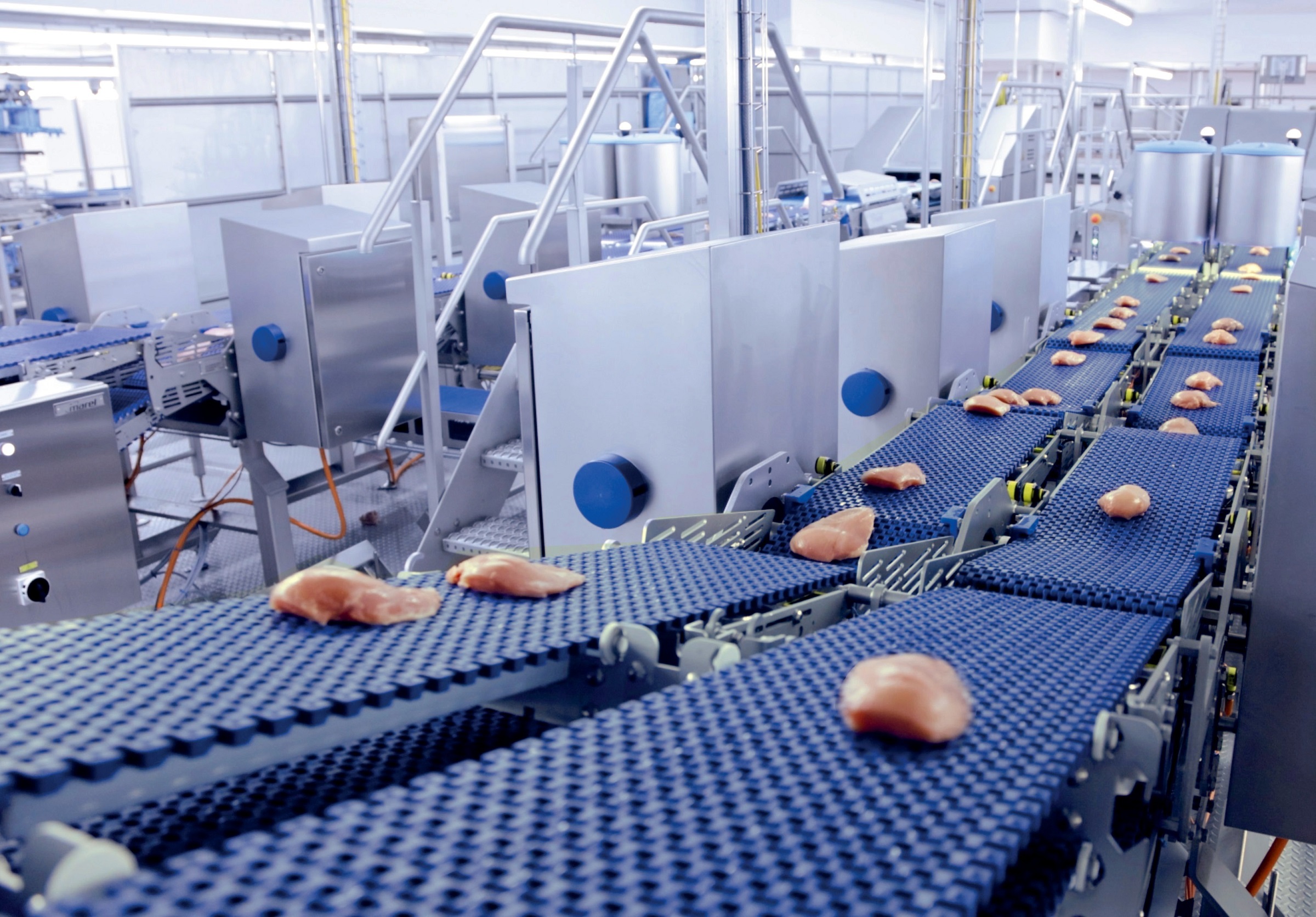
Traceability
Normally, once products have been released from the overhead conveyor shackle, their traceability is lost. Individual data, gathered earlier in the process and linked to the shackle, can no longer be tracked, as harvested products such as breast fillets lie randomly on the conveyor belt. Marel’s SystemFlex conveyor intelligence and product sensors along the line are, however, able to locate and trace these products in the process. The system follows product characteristics while the product is on a SystemFlex conveyor. All the time, the system knows the exact whereabouts of the fillet in the process and traceability is maintained.
Best destinations
Determining the volume, weight and initial position of each individual fillet on the belt is the job of the first Marel machine or sensor in the line, such as SensorX. IRIS FI adds visual quality to the fillet’s dataset. Based on this data, and combining it with production orders, Innova PDS is able to determine the best destination for each individual fillet.




